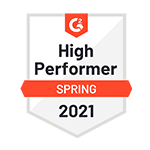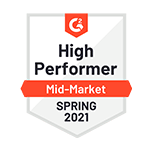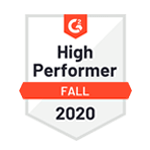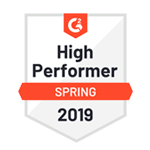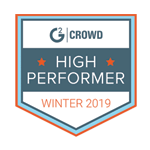The clipboard-and-checkbox approach to evaluating recruiters is dead. Buried alongside paper resumes and fax machines. Today’s SaaS recruitment landscape demands something far more sophisticated—a performance review framework that captures both quantitative outcomes and qualitative impact. Most recruitment leaders still evaluate their teams based on gut feelings. The data tells a different story. Organizations using structured, metrics-driven recruiter performance reviews report 37% higher quality of hire and significantly improved retention rates. Numbers don’t lie—but they don’t tell the complete truth either.
The Metrics Evolution
Time-to-fill remains the industry’s favorite yardstick. It’s tangible. Measurable. But dangerously incomplete. Forward-thinking talent acquisition teams now track multidimensional metrics: candidate satisfaction scores, diversity pipeline strength, and hiring manager partnership ratings. These metrics don’t compete—they complement.
Consider the case of a mid-market tech firm that revamped their recruiter evaluation system. Their recruiters weren’t struggling with speed—they averaged 24 days to fill positions. The hidden problem? New hires were exiting within six months. The missing metric? Quality of hire correlation to recruiter performance.
Beyond the Numbers
Data provides the skeleton—contextual analysis adds the flesh. A recruiter filling roles quickly might seem successful until you discover they’re pushing poorly-vetted candidates through the pipeline. Another’s slower metrics might mask their exceptional work with hard-to-fill technical positions.
The modern review must capture relationship cultivation—both with hiring managers and candidates. Does the recruiter translate business needs into compelling opportunity narratives? Do declined candidates still speak positively about the company?
Implementation Reality
Transitioning to data-driven reviews feels like pushing a boulder uphill—initially. Start small. Identify three metrics that genuinely matter to your organization’s talent strategy. Build dashboards that visualize trends, not just snapshots. Create space for context and narrative alongside the numbers.
Performance reviews shouldn’t induce anxiety. They should spark conversation. When done right, they transform from dreaded paperwork into strategic alignment tools—connecting individual recruiter actions to organizational talent objectives. Not just measurement tools, but development catalysts.
The future belongs to recruitment teams that balance the science of metrics with the art of human potential.
The Evolving Landscape of Recruitment Metrics
Remember when recruitment success meant simply filling positions? Those days are gone. The metrics that once defined recruiter excellence have undergone a seismic shift—transforming from basic productivity counters into sophisticated performance indicators that reflect business impact.
Traditional recruitment KPIs focused almost exclusively on volume and speed. How many positions are filled? How quickly? While efficient, this approach treated talent acquisition as a transactional function rather than a strategic business driver. Modern recruitment metrics tell a more nuanced story.
From Activity to Impact
Today’s key performance indicators for recruitment stretch far beyond the hire button. They measure quality, experience, and long-term value creation. This evolution didn’t happen overnight—it emerged as talent became the primary competitive differentiator in knowledge economies.
Quality of hire now stands as the holy grail of recruitment metrics. It’s notoriously difficult to quantify but impossible to ignore. Progressive organizations measure it through performance ratings of new hires, retention benchmarks, and hiring manager satisfaction scores. A tech enterprise in Austin recently discovered their highest-performing recruiters weren’t those with the fastest fills but those whose candidates received the highest 90-day manager ratings.
The Experience Economy Reaches Recruiting
Candidate experience metrics have graduated from nice-to-have to mission-critical. Net Promoter Scores from applicants—regardless of hiring outcome—provide insight into your recruitment brand health. These scores correlate strongly with future application rates and even consumer brand perception. The ripple effects are substantial—one rejected candidate can influence dozens of potential applicants.
Diversity metrics have similarly evolved. Basic demographic reporting has given way to pipeline diversity analytics, representation ratios across interview stages, and sourcing channel effectiveness for underrepresented talent. These metrics don’t just measure compliance—they track progress toward strategic talent objectives.
Cost Metrics Reimagined
Even cost-per-hire has transformed. Forward-thinking teams now calculate total acquisition cost against quality indicators, creating efficiency-to-quality ratios that provide more meaningful insights than raw cost figures. A higher acquisition investment that yields longer-tenured, higher-performing employees often represents the better value proposition.
Technology’s Impact on Measurement
Modern ATS and recruitment analytics platforms have revolutionized data accessibility. Recruiters now operate with real-time dashboards rather than quarterly reports. This immediacy enables course correction and performance optimization that wasn’t previously possible.
The most sophisticated talent acquisition teams have moved beyond isolated metrics to integrated recruitment scorecards. These holistic tools weigh various indicators against strategic priorities, acknowledging that different roles and market conditions demand different benchmarks. One-size-fits-all metrics have given way to contextual evaluation frameworks—making recruitment measurement both more complex and more meaningful.
What Makes a Great Recruiter Performance Review?
The difference between a transformative performance review and a bureaucratic checkbox exercise isn’t the form—it’s the framework. Exceptional recruiter evaluations balance quantitative assessment with qualitative insight, creating a development roadmap rather than just a performance snapshot.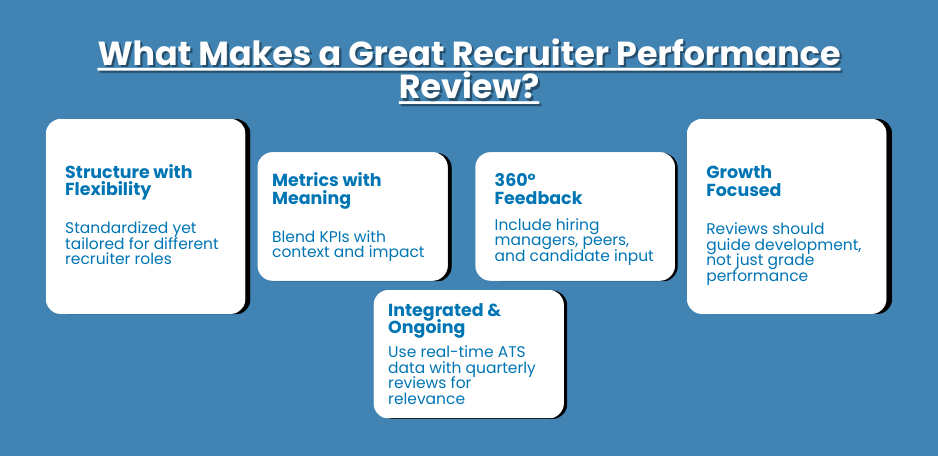
The Foundation: Structure with Flexibility
Every effective recruiter performance review template shares certain architectural elements. Clear evaluation categories, rating scales, and space for narrative feedback provide the scaffolding. But rigidity kills effectiveness. The best frameworks flex to accommodate different recruiting specialties while maintaining consistency across the talent acquisition function.
A director at a healthcare staffing firm put it perfectly: “Our best reviews feel like strategic planning sessions, not performance judgments. The paperwork guides the conversation—it doesn’t replace it.”
Beyond the Numbers Game
Metrics matter, but context transforms them from data points into insights. Consider this excerpt from a recruiter performance review sample used by a Fortune 500 technology company:
“Sarah averaged 18 days time-to-fill against a department benchmark of 22 days. More importantly, her quality-of-hire scores ranked highest among peers, with 92% of her placements receiving ‘exceeds expectations’ ratings at six-month reviews. Her sourcing strategy for engineering roles has become a department best practice.”
Notice how raw metrics serve as a foundation for the more meaningful analysis of approach and impact. The most effective reviews contextualize performance against team benchmarks, individual goals, and business outcomes.
The Feedback Ecosystem
Modern recruiter evaluations incorporate multi-directional feedback. Hiring manager surveys provide critical insight into partnership effectiveness. Candidate experience metrics reveal the recruiter’s external impact. Peer feedback illuminates collaboration quality. Together, these perspectives create a 360-degree view that no single metric could capture.
Development Pathways, Not Just Performance Judgments
The hallmark of exceptional recruiter performance review templates is their forward-looking orientation. They don’t just evaluate past performance—they chart future growth. Specific skill development opportunities, stretch assignments, and measurable improvement goals transform the review from assessment into advancement tool.
The Technology Integration Factor
Today’s best performance frameworks integrate seamlessly with recruitment analytics platforms. Rather than manually compiling metrics, managers can focus on analysis and coaching. One mid-sized SaaS company embedded their review template directly within their ATS, allowing real-time performance data to flow into quarterly conversations—eliminating debate about the numbers and focusing dialogue on the “why” behind them.
Practical Implementation
Effective implementation requires cadence, not just content. Annual reviews feel archaic in recruitment’s fast-paced environment. Progressive organizations have adopted quarterly formal reviews supplemented by monthly data check-ins. This rhythm matches the recruitment lifecycle better than annual evaluations ever could.
A thoughtfully designed recruiter performance review isn’t just an HR requirement—it’s a strategic talent development tool. When crafted with care and executed with consistency, it transforms from dreaded paperwork into a catalyst for individual growth and organizational excellence. The best templates don’t just measure—they motivate, developing recruiters who continually raise their own performance bar.
Common Mistakes to Avoid
Most performance reviews fail before they begin—derailed by fundamental misalignments between measurement and reality. The gap between recruiter performance objectives and evaluation criteria often resembles a canyon, not a crack.
The deadliest mistake? Evaluating all recruiters against identical metrics regardless of specialization. A technical recruiter filling senior developer roles faces vastly different challenges than a volume recruiter handling customer service positions. Their performance objectives should reflect these differences—not force false equivalencies.
Another common pitfall: overemphasizing activity metrics while undervaluing relationship cultivation. Tracking calls and submissions might seem objective, but these numbers often mask the quality of candidate engagement. Some of the most successful recruiters make fewer calls but build deeper connections.
Recency bias undermines countless reviews. A recruiter’s performance over eight months gets overshadowed by the last four weeks—for better or worse. Smart managers implement rolling quarterly assessments to prevent this distortion.
Perhaps most damaging: treating performance reviews as one-way evaluations rather than collaborative development discussions. When recruiters participate in setting their own performance objectives, ownership and achievement rates climb dramatically. The review becomes a partnership, not a judgment.
Setting Performance Goals for Recruiters: Aligning Metrics with Business Outcomes
Performance goals that genuinely drive recruiter excellence don’t materialize from industry benchmarks or last year’s targets. They emerge from the intersection of business strategy, talent market realities, and individual recruiter capabilities. The most effective goals transform abstract corporate objectives into concrete recruitment activities—creating a direct line between daily work and organizational success.
The Strategic Alignment Framework
Effective sample performance goals for recruiters cascade from organizational priorities. A company focused on aggressive growth needs different recruitment metrics than one prioritizing operational efficiency or innovation. Consider this alignment structure:
Business Priority → Talent Implication → Recruiter Goal
For a high-growth SaaS company, this might translate to:
- 30% revenue growth → 25% sales team expansion → Reduce time-to-fill for revenue-generating roles to 28 days
For a healthcare system focused on patient experience:
- Improve satisfaction scores → Enhance clinical staff quality → Increase 90-day quality of hire ratings to 85%
This alignment ensures recruiters aren’t chasing arbitrary metrics disconnected from business impact. Their success directly contributes to organizational outcomes—making performance measurement more meaningful and motivating.
Balancing Quantitative and Qualitative Goals
The most sophisticated recruiter goals for performance blend measurable outcomes with qualitative improvements. A senior technical recruiter might have these balanced objectives:
- Reduce average time-to-fill for engineering roles from 45 to 38 days
- Increase diversity in the engineering candidate pipeline by 30%
- Develop and implement a specialized technical assessment process that reduces hiring manager interview time by 25%
- Build relationships with three new technical communities to expand passive candidate sourcing channels
Notice how these goals combine specific metrics with strategic initiatives—creating a performance framework that values both efficiency and innovation.
Differentiating Goals by Recruiter Level and Specialization
Junior recruiters need different performance targets than experienced talent acquisition specialists. Entry-level goals might emphasize fundamental metrics like interview scheduling efficiency and candidate communication quality. Senior recruiters’ goals should include pipeline development, hiring manager partnership, and process innovation.
A manufacturing company recently restructured their recruiter performance goals to reflect specialization. Their high-volume warehouse recruitment team focused on cost-per-hire and time-to-fill metrics, while their corporate recruitment team emphasized quality-of-hire and candidate experience scores. This specialization produced dramatically improved results across both teams—proving that customized goals outperform standardized metrics.
The Implementation Reality
Setting goals means nothing without measurement infrastructure. Before finalizing recruiter performance objectives, ensure your systems can track the relevant data. Many organizations establish ambitious quality-of-hire goals only to discover they lack the mechanisms to measure post-hire performance correlation.
The Collaborative Advantage
The most successful organizations don’t impose recruiter goals—they co-create them. When recruiters participate in goal-setting, they identify realistic targets that stretch capabilities without breaking morale. This participation creates psychological ownership that drives performance far more effectively than top-down mandates.
One technology firm implemented quarterly goal-setting workshops where recruiters analyzed their historical performance data, market conditions, and business priorities to establish their own performance targets. The result? Goals were consistently more ambitious than management would have set—and achievement rates increased by 23%.
Performance goals shouldn’t feel like administrative exercises or punishment mechanisms. They should function as navigational tools—helping recruiters prioritize efforts, measure progress, and connect their daily work to meaningful outcomes. When properly structured, they transform from evaluation instruments into powerful motivational catalysts.
SMART Goals Tailored for SaaS Recruiters
Generic recruiter performance objectives rarely drive exceptional results. SaaS recruitment demands precision—goals as targeted as the talent they’re designed to attract. Effective SMART goals transform abstract expectations into actionable targets.
Consider these examples: Rather than “improve hiring quality,” a SMART objective specifies “Increase the percentage of engineering hires who pass technical probation from 82% to 90% by Q3.” Instead of “enhance diversity recruitment,” try “Expand underrepresented candidate submissions for product roles from 18% to 30% within six months through partnerships with three specialized talent communities.”
Time-bound elements prove particularly crucial in SaaS environments where market conditions shift rapidly. Goals without deadlines become perpetual works-in-progress rather than achievement targets.
The measurement component requires special attention. Many SaaS recruiters set ambitious goals without establishing tracking mechanisms—creating accountability without visibility. Each objective should include its measurement method: “Reduce technical role time-to-fill by 15% (measured through ATS milestone tracking) by implementing structured technical screening by June 30th.”
The most effective SaaS recruitment teams revisit SMART goals quarterly, not annually. This cadence matches the industry’s rapid evolution while providing meaningful measurement intervals. When properly constructed, these objectives don’t constrain recruiters—they focus their efforts on what genuinely drives organizational success.
Data-Driven Insights: Using RecruitBPM to Measure Recruiter Performance
Most recruitment platforms promise analytics. Few deliver actual intelligence. RecruitBPM stands apart in this crowded landscape—not just capturing data, but transforming it into performance insights that drive real improvement.
The typical recruiter performance review feels like an autopsy. By the time you’re analyzing what happened, the opportunity for intervention has long passed. RecruitBPM flips this dynamic on its head. Real-time dashboards reveal performance trends as they emerge—not months later during formal reviews.
Breaking Down the Measurement Barrier
Ask talent leaders about their biggest frustration with performance data. The answer rarely changes: too fragmented, too manual, too late. A recruitment director at a mid-sized tech company recently told me she spent nearly eight hours preparing for each quarterly review cycle—just compiling the metrics. RecruitBPM eliminated that administrative burden entirely.
The platform’s Performance Analytics Hub doesn’t just track standard metrics. It connects previously isolated data points—revealing relationships between sourcing strategies and quality-of-hire that traditional systems miss entirely. This correlation capability transforms basic reporting into strategic intelligence.
Customization Without Complexity
Different roles demand different metrics. Your technical recruiters shouldn’t be measured identically to your sales recruiters. RecruitBPM acknowledges this reality through role-specific dashboards that maintain consistency where it matters while adapting to specialized recruitment functions.
The customization extends beyond mere reporting. The platform allows you to weight key performance indicators for recruitment based on current business priorities. Facing aggressive growth targets? Time-to-fill might carry more weight this quarter. Struggling with retention? Quality indicators can take precedence.
This flexibility feels revolutionary for teams accustomed to rigid reporting structures. The system grows with your strategy—not against it.
From Measurement to Improvement
Data without action is just noise. RecruitBPM’s coaching module bridges the gap between performance identification and performance improvement. When the system flags a recruiter struggling with specific metrics, it automatically suggests targeted development resources and training modules.
A staffing agency implemented this feature last year with striking results. Their bottom-performing recruiters showed 42% improvement in key metrics within one quarter—simply because problems were identified and addressed immediately rather than during annual reviews.
The Visibility Revolution
Nothing drives improvement like transparency. RecruitBPM gives recruiters direct access to their own performance dashboards—no more guessing how they’re doing against targets. This visibility creates ownership that annual reviews never could.
The platform doesn’t just measure what happened—it helps predict what’s coming. Its pipeline analytics forecast potential bottlenecks before they impact performance metrics. This predictive capability transforms managers from reviewers into coaches—addressing problems before they materialize in performance data.
Beyond Individual Metrics to Team Intelligence
Great recruitment leaders need both individual and team performance visibility. RecruitBPM’s Team Performance module reveals patterns across recruiters—identifying systemic issues versus individual challenges. When three recruiters struggle with the same metric, that’s not a performance issue—it’s a process problem.
The system’s benchmarking capabilities add crucial context to performance data. Metrics don’t exist in a vacuum. A 30-day time-to-fill might be exceptional for senior roles but problematic for entry-level positions. RecruitBPM’s contextual analytics ensure fair and meaningful evaluation.
The platform doesn’t just transform how you review performance—it fundamentally changes how you understand, develop, and optimize your recruitment function. In today’s talent landscape, that’s not just a competitive advantage—it’s an existential necessity.
Custom Dashboards: What to Track and Why
The most effective recruiter dashboards don’t track everything—they track what matters. While examining recruiter performance review samples across industries, a pattern emerges: less is often more when designing performance visibility tools.
Four core metrics deserve prime dashboard real estate: time-to-fill (broken down by stage to identify bottlenecks), quality-of-hire correlation (linking recruiter actions to post-hire success), candidate experience scores (measuring the human touch), and pipeline diversity metrics (tracking representation across funnel stages). These metrics tell a complete performance story—efficiency, quality, experience, and inclusion.
Secondary metrics provide context: offer acceptance rates reveal a recruiter’s ability to close candidates, while source effectiveness shows their strategic sourcing capabilities. The magic happens when these metrics appear together—revealing connections between seemingly unrelated performance aspects.
Dashboard design matters tremendously. Visual indicators beat raw numbers—trend lines reveal patterns that tables obscure. The best dashboards include comparison benchmarks (team averages, historical performance, goals) that transform isolated metrics into meaningful evaluation tools.
The ultimate dashboard test? Whether recruiters voluntarily check it daily—not because they must, but because it genuinely helps them improve.
Integrations and Workflow Automation
Performance data trapped in silos rarely drives improvement. RecruitBPM’s integration ecosystem breaks these barriers—connecting performance insights to action through seamless workflow automation that transforms measurement into momentum.
The platform’s HRIS integrations pull post-hire performance data back into recruiter scorecards—creating direct visibility between recruitment decisions and business outcomes. This connection transforms abstract metrics into tangible results, showing recruiters exactly how their work impacts organizational success.
When performance issues emerge, the system doesn’t just flag problems—it triggers targeted improvement workflows. A recruiter struggling with candidate engagement metrics automatically receives relevant training resources while their manager gets notified with a pre-formatted recruiter performance improvement plan template that can be customized and implemented immediately.
Calendar integrations track recruiter activity patterns against performance outcomes—revealing productive habits versus time-wasting routines. Email and communication platform connections measure candidate response rates and engagement quality, not just activity volume.
The magic happens at these integration points—where data transforms into guided action. Performance improvement becomes systematic rather than sporadic, embedded in daily workflows rather than relegated to quarterly reviews. This continuous improvement loop creates recruitment teams that evolve constantly rather than reactively.
Sample Templates and Real Performance Review Examples
Most recruiter performance review templates fail before they’re even completed—designed as generic evaluation tools rather than strategic development instruments. The most effective templates don’t just measure—they guide meaningful conversation and establish clear development pathways.
The Anatomy of Effective Templates
Exceptional recruiter performance review templates balance structure with flexibility. They provide consistent evaluation categories while allowing space for context and nuance. Below is a simplified framework adapted from high-performing SaaS recruitment teams:
Core Performance Areas:
- Sourcing Effectiveness
- Selection Quality
- Candidate Experience Management
- Hiring Manager Partnership
- Process Efficiency & Innovation
Each area includes both quantitative metrics and qualitative assessment—acknowledging that numbers tell only part of the performance story. The best templates include specific examples of what “meets expectations” versus “exceeds expectations” looks like in practice, eliminating subjectivity and establishing clear standards.
Real-World Application
Consider this excerpt from an actual performance review for a mid-level technical recruiter at a growing SaaS company:
“Alex has demonstrated exceptional sourcing effectiveness this quarter, increasing qualified candidate pipeline by 37% while maintaining consistent quality standards. Their innovative approach to engaging passive candidates through personalized GitHub outreach resulted in 8 senior developer hires from previously untapped talent pools. Areas for development include improving time management during high-volume periods and enhancing partnership communication with hiring managers in the product organization.”
Notice how this example blends specific metrics with contextual analysis and clear development guidance. It avoids vague assessments in favor of concrete examples and outcomes.
Specialized Templates for Different Recruitment Functions
One-size-fits-all templates inevitably fit no one well. Progressive organizations develop specialized frameworks for different recruitment specialties. A high-volume recruiter requires different evaluation criteria than an executive search specialist. Technical recruitment demands different metrics than sales recruitment.
A mid-sized B2B SaaS company recently implemented role-specific templates with remarkable results. Their technical recruitment team’s template emphasized quality-of-hire metrics and technical community relationship building, while their sales recruitment template prioritized time-to-fill and candidate experience scores. This specialization increased the perceived fairness and relevance of reviews by 62%.
The Development Connection
The most powerful performance review examples directly connect evaluation to development. They don’t just identify strengths and weaknesses—they establish clear improvement pathways with resources, timelines, and success metrics.
Consider this development section from another real review:
“Based on current performance analysis, we’ve identified three priority development areas:
- Advanced boolean search techniques to improve candidate quality (Resources: LinkedIn Recruiter certification, weekly sourcing lab participation)
- Hiring manager relationship management (Action: Shadow senior recruiters in kickoff meetings, implement structured feedback loop)
- Technical screening efficiency (Goal: Reduce initial screening time by 20% while maintaining quality through improved questioning techniques)
Progress will be measured through weekly check-ins and monthly metric reviews.”
This development plan transforms the review from evaluation into action—creating clear next steps rather than vague improvement suggestions.
Implementation Guidance
The most effective implementation approach combines standardized templates with customized elements. Start with a core framework that ensures consistency across the recruitment function, then add specialized sections for different roles and seniority levels.
Review frequency matters tremendously. Annual reviews feel archaic in fast-moving SaaS environments. Quarterly formal reviews supplemented by monthly data check-ins create a rhythm that matches the recruitment lifecycle while providing timely feedback that drives real improvement.
When properly designed and implemented, performance review templates don’t feel like administrative burdens—they become strategic tools that align individual development with organizational talent objectives, transforming performance management from an HR requirement into a competitive advantage.
Creating a Recruiter Performance Improvement Plan (PIP)
Most PIPs fail. Not because the recruiter can’t improve—but because the plan itself lacks clarity, support, or realistic timelines. When a talented recruiter struggles, the right performance framework can transform their trajectory. The wrong one just accelerates their exit.
The breaking point often comes unexpectedly. A previously strong performer starts missing targets. Hiring managers complain about candidate quality. The recruiting pipeline dries up. The instinctive response? Rush to document deficiencies. This approach misses the mark entirely.
Start with patterns, not incidents
Before drafting a recruiter performance improvement plan, examine the data thoroughly. Is this a sudden decline or a gradual slide? Does the issue appear across all requisition types or just specific roles? One recruitment director discovered her supposedly “underperforming” recruiter was actually handling the team’s most challenging requisitions—context that completely changed the performance conversation.
Data reveals the real story. A technical recruiter’s declining metrics coincided perfectly with a major competitor opening an office nearby—dramatically altering the talent landscape. This wasn’t a performance problem; it was a market shift requiring strategy adjustment.
The architecture of effective improvement
Strong PIPs share common elements. They identify specific gaps between current performance and recruiter performance objectives. They establish clear, measurable improvement targets. Most importantly, they outline concrete resources and support—not just expectations.
The timeline makes or breaks success. Expecting immediate turnaround creates unnecessary pressure. A healthcare recruitment leader shared her approach: “We establish 90-day frameworks with weekly checkpoints. The first month focuses on process adjustments, the second on implementation, the third on consistency and refinement.”
This gradual approach acknowledges reality—sustainable improvement takes time.
The conversation matters more than the document
The delivery of a PIP often determines its outcome. Many managers approach these conversations defensively, anticipating conflict. This creates exactly the tension they fear.
A different approach yields better results: “I’m putting together this plan because I believe in your potential. These challenges are temporary—let’s address them together.”
This framing transforms the PIP from threat to opportunity. One tech recruiter described her experience: “When my manager presented the improvement plan as an investment rather than punishment, my entire perspective shifted. I went from updating my resume to recommitting to my role.”
Resources trump requirements
PIPs that list expectations without providing resources set recruiters up for failure. Effective plans include specific support mechanisms—whether that’s shadowing high-performing peers, targeted training, or adjusted requisition loads during the improvement period.
A struggling recruiter given three months to “improve sourcing effectiveness” will likely fail. The same recruiter provided with advanced boolean search training, sourcing lab participation, and weekly strategy sessions with a senior team member has a genuine chance at transformation.
Measuring what matters
The metrics you choose define success or failure. Track too many indicators and you create confusion. Focus on too few and you miss the complete performance picture.
Most effective PIPs identify 2-3 primary metrics that genuinely matter to business outcomes. For a recruiter struggling with candidate quality, tracking submission-to-interview ratios provides more actionable insight than generic time-to-fill metrics.
When implemented thoughtfully, performance improvement plans don’t end careers—they redirect them toward success. The best plans feel less like final warnings and more like customized development roadmaps, transforming struggling recruiters into valuable contributors through structured, supportive intervention.
Culture, Feedback, and Human Touch: Making Reviews Meaningful
Numbers lie. Or at least they tell half-truths. A recruiter hitting every metric might still be damaging your talent brand. Another missing targets might be building relationships that transform your hiring capability long-term. The difference between data and insight? The human conversation.
Most performance reviews fail in the delivery, not the design. They become clinical exercises—sterile evaluations that miss the messy, complex reality of talent acquisition work. The best managers approach reviews as strategic partnerships, not performance judgments.
The language matters more than the metrics
We recently observed a review where a manager told a recruiter, “Your time-to-fill is 7 days above target.” Full stop. No context, no curiosity, just disappointment. The recruiter left deflated, with data but no direction.
Contrast this with sample feedback for recruiter conversations that open doors: “I noticed your engineering roles are taking longer to close. Walk me through the challenges you’re facing with these positions.” This approach invites partnership rather than defensive responses.
The words we choose create either walls or bridges. A senior talent leader at a tech company shared her litmus test: “If my feedback could apply to any recruiter on the team, it’s too generic to be useful.”
Breaking the annual review stranglehold
Annual reviews feel like ancient history in today’s recruitment landscape. Markets shift weekly. Talent preferences evolve monthly. Waiting a year to course-correct is recruitment malpractice.
Progressive teams have scrapped the annual ritual entirely. A good review for recruitment agency performance now means continuous conversation—weekly data check-ins, monthly strategy adjustments, and quarterly development planning. When the formal review finally arrives, it simply confirms what both parties already know.
A recruitment director described her approach: “We’ve built feedback into our operating rhythm. My recruiters never wonder how they’re doing—they know daily, and we adjust constantly.”
The courage to have real conversations
Many managers hide behind metrics to avoid difficult conversations. They point to dashboards rather than discussing underlying issues like relationship building, communication style, or strategic thinking.
The most effective reviews tackle these subjective areas head-on—not with vague platitudes but with specific examples and clear expectations. “Three hiring managers mentioned they don’t feel you understand their technical requirements. Let’s discuss how we can bridge that knowledge gap.”
This directness requires courage but delivers clarity. One recruiter shared, “My previous manager would say ‘great job’ regardless of my performance. My current director tells me exactly where I stand and what excellence looks like. It’s sometimes uncomfortable but infinitely more valuable.”
Recognition that resonates
Generic praise feels empty. Specific recognition drives engagement. Instead of “good work this quarter,” effective managers say, “The sourcing strategy you developed for the data science team has transformed our pipeline quality. Three other teams have now adopted your approach.”
This specificity doesn’t just feel better—it reinforces exactly what excellence looks like, creating a roadmap for continued success.
When reviews balance accountability with authentic recognition, when they focus on growth rather than judgment, they transform from dreaded obligations into valuable strategic tools. The best performance conversations don’t just evaluate the past—they chart the future, turning metrics into meaning through human insight and partnership.
How to Train Managers to Conduct Effective Reviews
Most managers botch recruiter performance reviews spectacularly. They wing it. They avoid tough conversations. They focus on recent events while ignoring months of consistent performance. The results? Confusion, resentment, and missed development opportunities.
The breaking point came for one tech company when their top recruiter quit after a tone-deaf review. “My manager spent 30 minutes criticizing my time-to-fill metrics without once acknowledging I was handling our most competitive roles,” she explained in her exit interview. That expensive departure triggered a complete overhaul of their review training.
Ditch the forms, focus on conversations
Forms create the illusion of objectivity while actually encouraging lazy evaluation. Smart organizations now train managers to view forms as conversation guides—not substitutes for meaningful dialogue.
A talent acquisition director shared her approach: “We teach managers that if they’re spending more than 20% of the review time talking, they’re doing it wrong.” This listening-first approach transforms reviews from pronouncements into discoveries.
The preparation that actually matters
Most managers prepare for reviews by gathering metrics the day before. This last-minute scramble guarantees a shallow conversation. Effective training teaches a different approach: tracking patterns over time, gathering multi-source feedback, and identifying specific situations that illustrate both strengths and challenges.
One recruitment leader requires managers to document three specific examples of exceptional work and two development opportunities—with context—before entering any review conversation. This preparation forces deeper analysis beyond surface-level metrics.
Teaching the tough conversations
Managers avoid difficult feedback because they lack the language to deliver it effectively. Training should provide concrete frameworks that focus on specific behaviors and business impact rather than personal characteristics.
The contrast is stark:
Untrained feedback: “You’re not detail-oriented enough.” Trained feedback: “I’ve noticed candidate profiles reaching hiring managers contain incomplete information about technical qualifications. This creates extra screening steps that slow our process.”
The second approach creates a clear path to improvement rather than a vague personality critique.
From judgment to partnership
The most crucial mindset shift? Moving from evaluation to collaboration. Effective training teaches managers to approach reviews with curiosity rather than conclusions—asking questions like “What barriers are preventing you from hitting these targets?” instead of simply noting missed metrics.
This partnership approach transforms the entire dynamic. One recruiter described the difference: “My previous manager told me where I was failing. My current one helps me figure out how to succeed.”
Making it stick
Role-playing tough conversations feels awkward but builds essential skills. The most effective training programs include practice scenarios based on real situations—giving managers safe opportunities to test approaches before high-stakes conversations.
When organizations treat performance conversations as a core leadership competency—not an HR requirement—they transform reviews from dreaded obligations into powerful development tools. The investment in manager training pays dividends through improved recruitment performance, stronger talent relationships, and dramatically reduced turnover.
Future-Proofing Recruitment Through Performance Analytics
Tomorrow’s recruitment challenges won’t be solved with yesterday’s metrics. While most organizations remain fixated on lagging indicators like time-to-fill, progressive talent acquisition teams are shifting toward predictive analytics that anticipate hiring needs before requisitions even open.
This evolution transforms the recruiter performance review from backward-looking evaluation to forward-focused strategic planning. The difference is profound—and increasingly essential in volatile talent markets where reactive recruitment simply can’t deliver.
From Reactive Metrics to Predictive Insights
Traditional key performance indicators for recruitment tell you what happened. Predictive analytics show you what’s coming. By analyzing historical hiring patterns against business growth indicators, AI-powered platforms now forecast talent needs with remarkable accuracy—allowing recruiters to build pipelines before formal requisitions exist.
A tech company recently implemented such a system with striking results. Their predictive model identified an upcoming surge in data science hiring needs three months before business units submitted formal requests. Recruiters who built proactive pipelines filled these positions 62% faster than historical benchmarks. Those who didn’t struggled significantly.
The New Performance Indicators
This shift demands different performance metrics. Pipeline readiness scores—measuring candidate relationships developed before formal openings—now matter more than traditional time-to-fill metrics. Talent network quality—the depth and relevance of a recruiter’s professional community—becomes a critical leading indicator of future success.
Smart organizations have begun incorporating these forward-looking metrics into recruiter performance reviews, evaluating not just current results but future readiness. One financial services firm now dedicates 30% of their performance evaluation to “talent anticipation metrics” that measure a recruiter’s ability to predict and prepare for upcoming needs.
The Human Element in Algorithmic Recruitment
Amid this analytical revolution, human judgment remains irreplaceable. The most sophisticated performance frameworks balance algorithmic insights with relationship quality and candidate experience metrics. They recognize that while AI can identify patterns, recruiters create connections that transform those patterns into people.
A healthcare recruitment leader described their approach: “We measure both quantitative readiness and qualitative relationship strength. A recruiter might have impressive pipeline metrics but weak hiring manager partnerships—or vice versa. Excellence requires both.”
Implementation Reality
Organizations don’t need to overhaul their entire recruitment function overnight. Most successful implementations start with a single business unit or role family, applying predictive approaches to high-volume or critical positions before expanding. This measured approach builds capability while demonstrating clear ROI.
The future belongs to recruitment teams that anticipate rather than react—transforming performance reviews from historical evaluations into strategic planning sessions that prepare both recruiters and organizations for tomorrow’s talent challenges.
Final Thoughts
The disconnect hits hardest at review time. Recruiters who thought they were excelling suddenly face criticism. Managers armed with metrics but missing context deliver feedback that lands like a punch. The post-review slump follows—that predictable dip in engagement when talented recruiters update their LinkedIn profiles.
It doesn’t have to be this way.
The strongest talent acquisition teams have transformed their approach entirely. They’ve scrapped the quarterly anxiety fest in favor of continuous feedback loops. They’ve ditched generic templates that treat all recruiters identically regardless of specialization or experience. Most importantly, they’ve shifted from evaluation to partnership—creating conversations that energize rather than deflate.
The breakthrough often comes unexpectedly. A healthcare recruitment director described her moment: “I watched our top performer leave after a review that focused exclusively on metrics while ignoring the relationships she’d built. That’s when I realized our process was broken, not our people.”
This realization triggers transformation. Reviews become development tools, not judgment mechanisms. Metrics inform conversations rather than dominating them. Managers learn to ask better questions instead of delivering better critiques.
The results speak for themselves. A tech company that revamped their approach saw recruiter turnover drop by half within six months. Their hiring manager satisfaction scores climbed steadily. Most tellingly, their recruiters began voluntarily tracking their own metrics between reviews—a clear sign the process had shifted from threat to tool.
This evolution requires both mindset and mechanism. The right technology doesn’t replace judgment—it enhances it, surfacing patterns human observation might miss while freeing managers from data compilation to focus on actual coaching.
RecruitBPM tackles this challenge directly—connecting performance data to development resources through intuitive dashboards and analytics that reveal not just what happened but why. Our platform helps recruitment teams transform reviews from dreaded paperwork into strategic advantage.
The question isn’t whether your organization should evolve its approach to recruiter performance reviews. The real question: How much longer can you afford not to?
FAQs
What metrics actually matter in a recruiter performance review?
The metrics that drive real impact combine efficiency with quality. While most organizations obsess over time-to-fill, the strongest teams balance it with quality indicators like hiring manager satisfaction and new hire performance ratings. One tech company discovered their fastest recruiter was actually their most problematic—quick fills that became quick exits. Track fewer metrics more meaningfully. Five well-chosen indicators beat fifteen superficial ones every time.
How frequently should we review recruiter performance?
Annual reviews feel like ancient history by the time they happen. Markets shift weekly. Talent preferences evolve monthly. Waiting a year to course-correct is recruitment malpractice. The rhythm that works? Quarterly structured conversations backed by weekly data check-ins. This cadence catches issues before they become patterns while providing regular recognition opportunities. One recruitment director put it bluntly: “By the time the formal review happens, nothing discussed should be a surprise.”
Can we use the same review framework for all recruiters?
Using identical criteria for different recruitment specialties creates guaranteed unfairness. Your technical recruiters filling senior engineering roles face radically different challenges than your volume recruiters handling customer service positions. While certain foundational metrics should remain consistent, performance expectations must reflect role-specific realities. One healthcare system saw immediate engagement improvement when they implemented specialized frameworks for their different recruitment functions.
How do we deliver tough feedback without crushing morale?
The approach that actually works focuses on specific situations and business impact rather than sweeping personality judgments. Replace “you lack attention to detail” with “the last three engineering candidates you submitted were missing critical technical qualifications, which created extra screening steps for the hiring manager.” This specificity makes feedback actionable rather than personal—dramatically increasing the chances of actual improvement.
What’s the biggest mistake that derails recruiter reviews?
Treating them like performance judgments instead of development partnerships. Reviews that only look backward miss their greatest value—building future capability. The most effective conversations spend equal time analyzing past performance and crafting forward-looking development plans. When reviews end with clear growth paths and resource commitments, they transform from dreaded obligations into valuable strategic tools that actually drive improvement.










